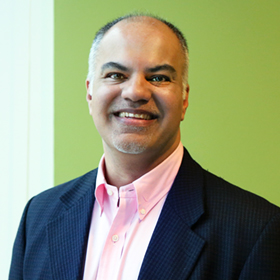Executive Summary
Today, heart disease, stroke, diabetes, asthma, and other chronic diseases account for about 70 percent of all deaths in the United States and restrict daily living activities for 25 million people. They also impose huge costs on families and the economy, gobbling up an estimated 75 percent of the money Americans spend on health care. Unless we can reach people at risk of chronic disease with the right interventions, these largely preventable diseases threaten to halt or even roll back gains in Americans’ health and life expectancy.
Read the Full Article
Please go to the Stanford Social Innovation Review website to read the full article.
The good news is that for some chronic diseases we have a pretty good idea of what it takes to change individual behaviors, a vital part of the prevention equation. But the challenge for evidence-based interventions targeting chronic diseases is to reach the people that need it beyond small-scale demonstrations and pilots.
Enter national nonprofit networks, the focus of Bridgespan authors Taz Hussein and Michaela Kerrissey’s Stanford Social Innovation Review article, “Using National Networks to Tackle Chronic Disease.” The YMCA of the USA (Y) and other such networks don’t employ doctors and nurses, provide clinical services, or treat patients. What they offer are features that are both hard to replicate and uniquely suited to the task of changing thinking and behavior on a national scale: a presence in communities across the nation; large numbers of people already coming through their doors; and staff and volunteers with deep knowledge and expertise about the communities they serve.
The 160-year-old Y is now flexing its distribution muscle to address diabetes. It has adapted the Diabetes Prevention Program, a lifestyle intervention for people at high risk of type 2 diabetes, whose effectiveness was demonstrated in a National Institutes of Health study and is now delivering it at 70 local Y associations across the nation.
OASIS, a national network that serves adults age 50 and older, is using its network to combat childhood obesity. It has adapted an evidence-based curriculum called Coordinated Approach to Child Health (CATCH), originally designed for schools, and is successfully using older adult volunteers to deliver it to thousands of youth in after-school programs in 14 states.
Of course many nonprofits attempt to scale up their programs. What sets the scaling efforts of the Y and OASIS apart is that they are using a preexisting distribution infrastructure for something other than its original purpose. And the Y and OASIS are not the only American nonprofits having large distribution networks that can be mobilized. Boys & Girls Clubs of America has 50,000 trained staff and reaches almost 4 million young people annually through its 4,000 clubs; organizations like Girls Inc. and Big Brothers Big Sisters of America engage many hundreds of thousands of children and youth each year. These nonprofit networks have a reach and impact into day-to-day life in communities that few organizations can rival.
The experiences of OASIS and the Y suggest that national nonprofit networks must undertake four key tasks to successfully scale up public health interventions.
- Find an intervention that fits the mission and the capacities of the organization.
- Adapt the intervention for community-based delivery.
- Maintain fidelity to the intervention as it scales up.
- Secure funding to scale up the intervention.
Much remains to be done to prevent and manage major chronic diseases. But there is evidence that national nonprofit networks can make a significant contribution to the effort. If government, philanthropy, public health researchers, and insurers support the move, the payoff could be enormous. The lessons learned from participating in one intervention can be applied to the next initiative, until scaling interventions becomes an integral part of the skill set of national networks. As Jonathan Lever, the Y’s vice president for Health Strategy and Innovation and architect of Y’s efforts to prevent diabetes, aptly says, “We’re building our distribution muscle and that muscle will get stronger the more we use it.” The consequences for the nation’s health could be far-reaching and long lasting.
Sources Used for This Article
[1] “Chronic Diseases: The Power to Prevent, The Call to Control,” Centers for Disease Control and Prevention, 2009, http://www.cdc.gov/chronicdisease/resources/publications/AAG/chronic.htm
[2] Diabetes Prevention Program Research Group, “Reduction in the Incidence of Type 2 Diabetes With Lifestyle Intervention or Metformin,” New England Journal of Medicine, vol. 346, no. 6; Feb. 7, 2002.



